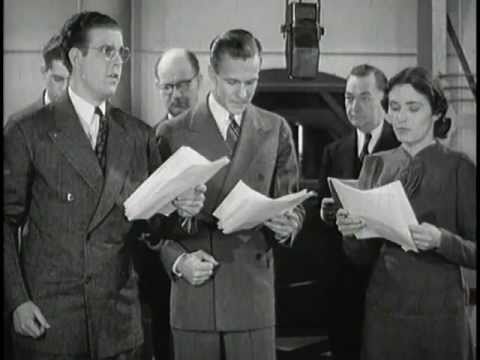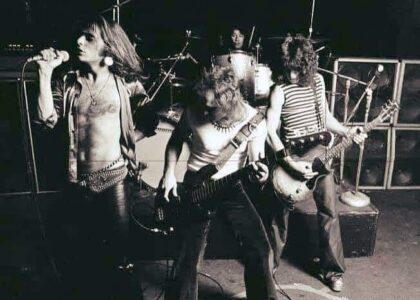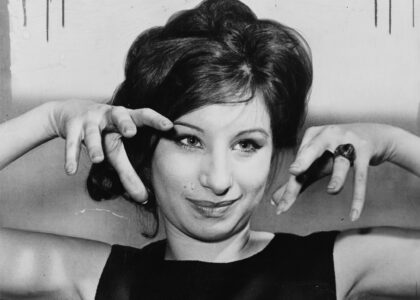Natural sound has always been a fascination for both listeners and producers of spoken word audio content. Replicating sounds and effects that only happen in nature can be both challenging and rewarding when done right, and irritating when done wrong.
Powered by RedCircle
In radio’s Golden Age, creating “natural sound” effects was done on the fly, often using intricate gadgetry that took hours to build for an effect that would only last a few seconds. As an example, think about the imagination it took to build the rain machine you see around the 5:20 mark of this video from 1938.
Of course, technology has completely changed our approach to natural sound. But don’t get ahead of me – it hasn’t changed in the way you think.
Sure, with access to a library of sound effects, you can approximate the natural sound of all kinds of things. You can hear the waves lapping on the shore as a cruise ship passes and the seagulls make whatever that sound is that seagulls make (sorry, Finding Nemo has me forever hearing seagulls as saying, “Mine?”). What you can’t replicate with digital tricks is the nuances of human speech, and in most cases, the differences in what things sound like when they’re recorded in a natural setting versus a studio environment.
I recently heard a radio commercial where the announcer was capturing the excitement of a sale by jumping out of a plane. Excited, and shouting to be heard over the natural sound of the plane and the wind, they acted their way admirably through the script in the time allotted, and we moved on to the next commercial.
What a wasted opportunity.
Here’s what I mean when I say that technology has changed our approach to natural sound – it has made it easier for producers to be lazy. There’s no reason to have an announcer in a studio to read that commercial, having to pretend like they’re jumping out of a plane, when technology has made it possible to more faithfully recreate the nuances that can bring a script to life.
Am I suggesting that you should have your announcer take the script on a sheet of paper and actually jump out of a plane? Of course not. But for exactly zero extra expense, I can pretty faithfully replicate those sounds with a little imagination.
Find a back road that you can drive down uninterrupted for a few seconds. 15 seconds or so should be enough. Have your announcer lean out the window and read the script while someone drives along – carefully – going at least 10 or 15 miles per hour. If it works better, have the announcer face the back of the vehicle.
Know what you get then? Natural sound. You get actual wind buffeting an actually excited announcer who’s having their breath taken away, just like it would if they were skydiving.
Know what most (lazy) producers would say about that approach? “The audio quality would be terrible.”
You mean, the way it would be if someone were actually skydiving? If you’re going to commit to the theater of the mind, then actually commit to it.
Consider, as an example, this shot that was “leaked” from the production of one of the Marvel movies:

The most important thing to note about the image is this: It was shot outdoors. Why? Because hair blows differently in real wind. Eyes react differently to real light. Voices sound different on a windy day than they do in a studio with wind sound effects playing. (If you want to get technical about it, not only do people project differently when they’re speaking outdoors, but the outdoor environment also “steals” certain audio frequencies.)
A few seconds into my demo reel (which you’ll find on the Voiceover page), you’ll hear me reading a commercial and biting into an apple, then continuing to talk with food in my mouth. At the session, the producer wanted to use an apple biting sound effect, and for me to pretend to have food in my mouth. Instead, we ran across the street and bought a couple of real apples from a convenience store. Good thing we bought two, because it took several takes before we got one that combined the right amount of crunch and mouth noise to make it sound realistic.
So why do you have an announcer, sitting in a chair, pretending to talk to us while they’re out jogging? Unless your phone was built prior to 2010, it has a pretty decent microphone in it. One that you can record on the free apps on your phone. Give your announcer a script, some Nikes and send them out to sound like an actual person who’s actually jogging because… uh… they are. Again – bingo. Natural sound.
On a related note, let me tell you about what I think was the best Public Service Announcement that was ever done in the ongoing effort to curb drunk driving. It was done by the team at CHUM Radio in Toronto, and written by Mike Occomore. The message was to discourage people from drinking and driving, and Mike found a way to do it like no one else ever had. He took a group of half a dozen people into one of the station’s recording studios, where they were given unlimited pizza, beer and wine. After a couple of hours, producer Al Campagnola pressed “Record” on the tape deck as the group continued to get completely hammered. Mike and Al then lifted several clips of the group trying to read various pieces of copy they’d been given. The listener heard a slobbering, screaming, drunken bunch of idiots, and a simple announcer tag said,
“If this is how adults react behind a mike after a few drinks, imagine their reactions behind a wheel.”
It was brilliant theater because all we were given was the natural sound of adults behaving badly. Suddenly, however, we were transported in our minds to the bad memory of every obnoxious drunk we’d ever had the misfortune of having to spend time with. The tag made its point brilliantly. And not surprisingly, the spot was held up as one of the best public service announcements produced anywhere in North America.
If the audio is effective, the listener’s brain will construct whatever buildings, props and landscapes are needed to complete the scene.
Once you hear the spot, you immediately understand that using genuine drunk people instead of having actors pretend to be drunk is a huge part of what makes the spot work – especially when you’re told at the beginning that what you’re hearing is real. It provokes that same instinct that makes people slow down to look at a car accident, unable to avert their eyes.
Another, much less noteworthy example: There’s a spot on TV for one of those online casinos; in the commercial, the place is supposedly run by the lion who also appears in the logo. For thirty seconds, the CGI lion wears a suit and walks around showing us the “behind the scenes” operation of the online casino, complete with pyro and pratfalls. Except that the voiceover is completely disconnected from the action. Not from an animation perspective; the mouth is perfectly synchronized with the announcer. In this case, the lion doesn’t sound real. His voice doesn’t reflect the craziness that’s going on around him. A clown explodes through a window beside him, yet he continues reading the script like an announcer in a studio, instead of as a lion in the middle of bedlam. So the effect is wasted, and what must have been an expensive commercial to produce, looks cheesy.
As Orson Welles learned with War of the Worlds, there’s no limit on where radio can take the listener’s imagination. In addition, most radio stations now have massive libraries of sound effects that can make any production sound even more realistic. Want your own, more authentic sound effects? Make them yourself. You want the spot for your car dealership to sound like it really happened in the mechanic’s bay? Go to the dealer, take out your iPhone and hold it up in the air for two minutes. There you go, genuine sound. If you really want it to be authentic, record the voiceover there, too.
Natural sound doesn’t have to be complicated. As a morning show host, I used to really look forward to the days when we would do a “random draw” for some big prize we were giving away. When draw time came, I would grab the trash can from under the mixing console, put it beside my microphone and talk directly into the trash can. My exasperated co-host would explain that I had crawled inside the draw drum again, and I would hand them the winning entry from deep inside the massive drum full of entries. On the air, it was an incredibly convincing effect – especially when I would knock over my chair on the way out, which made it sound like the drum had collapsed under my weight. Then the pause, the brief silence and the inevitable, “I’m okay!”
Orson Welles used 1938 technology and had people convinced that we were under alien attack through the skilled use of production techniques and great voice talent. Imagine what’s achievable now! Especially if we work as hard at getting it right as Welles did, and think less about taking shortcuts to get it done faster.






